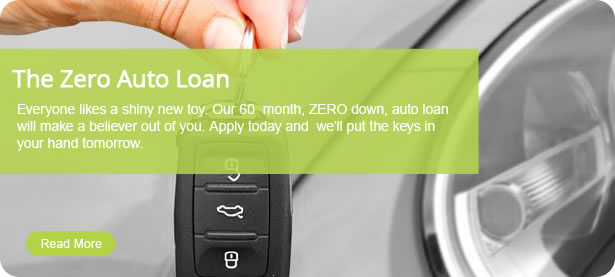SECURITY CENTER
COLUMNIST / BLOGS
TOOLS
PODCASTS/VIDEOS

Auto Buying and Insurance
Auto Buying and Insurance Glossaries
Adjusted Capitalized Cost: Total amount financed on a car loan. Includes deductions like down payments, credits, trade-ins, and rebates, as well as additions for financing charges and other fees.
Aggregate Limit: The maximum amount that can be paid for a claim on an insured vehicle, regardless of how many people are injured or the cost of items damaged.
Amount Financed: Total amount borrowed to purchase a car. (Same as adjusted capitalized cost.)
Anti-Lock Brakes: Brakes that automatically pump when the pedal is pressed to the floor during an emergency stop.
"As Is": Vehicle sold "as is," with no warranty or guarantees. Purchaser of the car is responsible for all repairs, etc.
Base Price: The cost of a car without options but including all standard equipment and the factory warranty.
Blue Book: The National Auto Dealers' Association's (NADA) Used Car Book that estimates used car prices based on model, make, year, mileage, and features.
Blue Book Value: The value of a vehicle as estimated by the blue book guide. Also commonly referred to as "book value."
Bodily Injury Liability: Protection for the insured for all sums up to policy limits which the insured must pay due to bodily injury to a third party. Coverage also pays defense costs against legal actions.
Buyer's Guide: Form filled out by dealers explaining any warranty and warranty terms. The Federal Trade Commission requires all dealerships to display the buyer's guide in the vehicle's window.
Capitalized Cost: Value of a vehicle at the beginning of the lease; the residual value is the value of a vehicle at the end of the lease term.
Collision Coverage: Auto insurance that protects a vehicle against direct accidental loss by collision with another vehicle or object.
Comprehensive Coverage: Car insurance coverage that protects against losses to a vehicle caused by something other than a collision. Can include theft, vandalism, flooding, fire, and glass breakage, among other causal factors.
Dealer Invoice: The price the dealer paid the factory for the car.
Dealer Sticker Price: Price of a vehicle including base price plus the cost of all options, markups, etc.
Deductible: The amount the purchaser must pay if repairs are necessary.
Depreciation: The reduced value of a car after it has been purchased. Depreciation is based on time as well as maintenance history, use, etc.
Down Payment: The amount of money paid up front to purchase the vehicle.
Early Termination Fee: Fee paid if a lease is terminated early.
Excess Mileage: Number of miles exceeding the terms of a lease. If a lease allows 12,000 miles a year and the car is driven 15,000 miles, 3,000 miles are considered excess mileage and a per-mile fee is charged.
Excess Wear & Tear: Damage or wear on a vehicle beyond what is considered normal wear and tear. Conditions are specified in the lease.
Extended Warranty: A form of insurance policy on a vehicle that will cover repairs and at times regular maintenance.
Full Glass Coverage: Waives a comprehensive deductible for all window glass claims. (Not available in all states.)
Gap Insurance: Insurance that pays if a leased car is stolen or totaled, above and beyond what standard auto insurance will pay. Gap insurance covers the gap between the value of a vehicle and the amount owed on a lease, including penalties for early termination.
Liability: Responsibility for injury or damage suffered by another person or persons.
Medical Payments: Coverage that pays up to a specific amount for injuries sustained by the owner and any covered persons in the vehicle, regardless of who is at fault for the accident.
Motor Vehicle Report: A report listing moving violations like speeding tickets as well as serious violations a driver has accumulated in the past several years. Used to determine insurability and the cost of insurance.
M.S.R.P.: Manufacturers Suggested Retail Price; sticker price of the vehicle.
No Fault Coverage: Insurance that pays regardless of who is at fault for an accident.
Options: Extra features that can be added to a standard vehicle, usually in packages. Options can include air bags, anti-lock brakes, power locks and windows, rear wiper, rear defroster, etc.
Property Damage Liability: Coverage for damage to another person's property, like vehicles, homes, fences, etc.
Purchase Option Price: Selling price of a vehicle if that vehicle is purchased at the end of a lease period.
Residual Value: The value of a vehicle at the end of the lease period. The higher the residual value, the lower the monthly lease payments, on average.
Rental Reimbursement: Coverage to pay for rental car
expenses while a vehicle is being repaired or until a new
vehicle can be acquired.
Title: Vehicle ownership history
Towing Insurance: Reimburses for expenses if a vehicle needs to be towed.
Trade-in Allowance: Amount the dealer will pay for a trade-in if a new vehicle is purchased.
Umbrella Policy: A liability insurance policy that provides additional coverage extending beyond the limits in a standard vehicle insurance policy.
Uninsured Motorist Coverage: Protects the owner and occupants of a vehicle for bodily injury up to the policy limit in the event of an accident with a legally liable uninsured motorist.
Upside Down Loan: A loan where the amount owned is greater than the value of the vehicle.
Vehicle Identification Number (VIN): The vehicle serial number, usually found on the dashboard on the driver's side.
Warranty: Guarantees that certain mechanical and body parts will be repaired or replaced if failure occurs. Warranties are based on limits like mileage or elapsed time.



 Email
Email Print
Print


